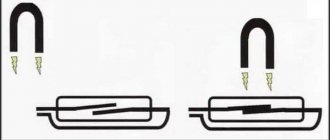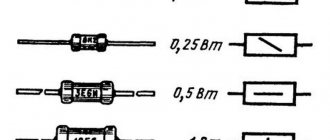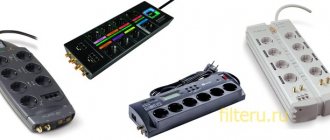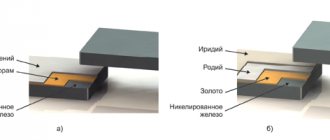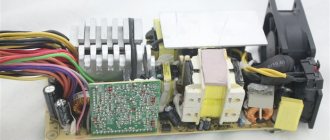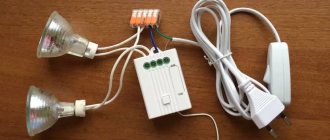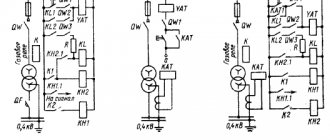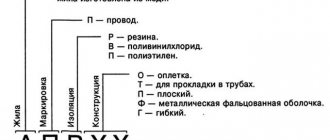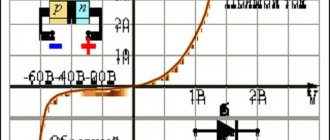A pipe coupling is simply an irreplaceable thing in modern plumbing and other industries that actively use pipes. The coupling connection allows us to create a wide variety of pipeline and water supply configurations. If they are not used, it will be possible to create only a straight, limited section of pipe. And this limits the functionality both in the installation of water supply at home and in production.
Connecting coupling
Welding and soldering of pipelines carries certain risks. Possibility of fire or explosion in pipes containing flammable media. And besides, they require large expenses in materials and time for this type of installation. The installation of fittings is completely mechanical and occurs much faster.
Standards
Due to the importance of the unit for any system, the characteristics and application are regulated by GOSTs:
- GOST R 50371-92: Mechanical couplings for general machine-building applications. Terms and Definitions.
- GOST 15622-96: Friction safety clutches. Parameters, design and dimensions.
- GOST R 50893-96: Ball safety couplings. Basic parameters and dimensions. Technical requirements.
The documents include basic information on the parts under consideration with a description of groups and types, the principle of operation of each specific element.
What do couplings for metal pipes look like?
Couplings belong to the category of fittings. They are connecting elements. And since pipelines are cylindrical in shape, all couplings offered today are also hollow cylinders. They are all metal.
Previously, they were mainly used with threads cut into their ends, which could be internal or external. Today, the range has expanded with the advent of new technologies for connecting metal pipes.
Areas of application
Couplings are used to connect shafts. In this case, the following are eliminated:
- misalignment of shafts and the presence of distance between them;
- the presence of an angle between the axes of rotation;
- sharp blows and shocks in the operation of production machines.
The purpose of the coupling is to protect equipment. Using the device in a gearbox allows you to protect the unit from overload - if the mechanism jams, the cheaper coupling is destroyed. To transmit torque between shafts of different diameters, compensating types of devices are used.
An important function of the device is quick dismantling. If a part of the mechanical assembly needs to be serviced, the coupling can be easily removed. The serviced machine parts are quickly connected and are completely ready for use.
Classification of couplings
There is a classification of couplings by design:
- managed;
- uncontrollable.
Interesting: What is resistance welding and its types
And also by purpose:
- deaf (hard);
- compensating;
- elastic;
- coupling;
- automatic;
- magnetic and electromagnetic principles of operation.
Each type is used based on the specific operation of the unit.
Varieties by design
Design features distinguish the following types of couplings:
- Spring. Another name is a coupling with a serpentine spring. The device compensates well for sudden dynamic loads. It is a safety element, that is, it can collapse if there is excessive load on one of the shafts.
- Bush coupling. A rigid or blind bushing that connects the two ends of shafts. Minimally compensates for misalignment, has high strength and a low transmitted torque.
- Flange coupling. The connecting element is made of two parts in the form of flanges, mounted on the shaft shanks. It is assembled with bolts; to protect against overloads, bolts made of soft steel can be installed, which are cut off when overloaded on the drive. Transmits high torque.
- Elastic coupling with star. The design solution is a type of cam-disk mechanism. The working planes of the cams are divided by an elastic star.
- Elastic sleeve-finger coupling. The design of this coupling is made in the form of two coupling halves and static pins in one of them. There are rubber bushings on the fingers, which are the contact area of the fingers with the second coupling half.
- Coupling with toroidal shell. The main purpose of the device is components and assemblies with a high level of vibration and shock during operation. Perfectly compensates for radial displacement of shaft axes up to 5 mm.
The mechanical coupling has a long service life in the absence of peak loads on the equipment. It does not require maintenance. Before starting work, an audit inspection of the main couplings of the main production drives is carried out.
According to damping abilities
Damping mechanisms make it easier to overcome the resonant moment of a mechanical drive. Most often these are devices with elastic elements in the design. For example:
- flange type - elastic bushings;
- cam – star or gear made of dense plastic;
- spring type - a design in the form of a coil of a spring with a reinforced cross-section.
Interesting: Types of metal cutting equipment
According to compensating abilities
Compensating links include elastic and rigid varieties. The purpose of the application is to eliminate shaft misalignment, and the elastic ones additionally smooth out sudden loads during startup. The most common examples are:
- cam;
- serrated.
Varieties by material
When used on pipeline lines, couplings act as repair and installation elements. Differ by material:
- For steel pipes, models without thread and with thread are used. Threaded connections are dismountable and can be repaired. Threads will be required on the two pipes being connected. Additional sealing is done using winding, sealant, and lock nut. Elements without threads require the installation of a one-piece plan by welding.
- For copper pipes, crimp threaded couplings and solder couplings are used. Soldered joints withstand high pressure and do not change their characteristics when the metal expands due to heat. The work uses a special flux, solder, and burner. Crimp couplings install faster, but due to the softness of copper as a non-ferrous metal, they can weaken over time.
- For cast iron pipes, crimp couplings with gaskets are widely used. The devices consist of two elements held together by bolts. Installation on the repaired area does not require welding, soldering or special skills. The selection is made for a specific pipeline diameter; a slight misalignment of the two ends of the pipe is possible.
- For plastic and polymer pipes, couplings made of similar materials are used. Installation depends on the specific model and involves soldering, crimping, and tightening like couplings for cast iron. For sewer pipes made of plastic, the couplings are fitted with a seal without additional fastening.
How to install couplings for metal pipes
Threaded metal fittings are easy to install:
- FUM tape is wound onto the pipe thread.
- The coupling is screwed on so that the edge of the pipe reaches the middle of the length of the fitting.
- From the opposite side, a drive is screwed into the latter, also to the middle. A sealing material is pre-wound onto it.
- The squeegee is welded to the second pipe.
The second run must be long so that during welding, when the temperature of the metal increases, the latter does not reach the joint, which can cause the sealing tape to burn out.
Cast iron fittings are installed in the same way. But there is also a difference. You need to purchase nuts for them. They support the ends of the coupling, creating increased tightness of the connection.
The process goes like this:
- The nut is screwed onto the thread until the end.
- FUM tape is wound.
- The fitting is screwed on.
- First the second nut is screwed onto the squeegee, then the FUM tape. It screws into the coupling.
- Both nuts are tightened to the edges of the fitting.
Now let's talk about how to install a compression coupling for a metal pipe. There are a couple of requirements here:
- The ends of the pipes are cut strictly perpendicular to the axis. Their surfaces are cleaned of paint, rust and other layers.
- Installation of the coupling itself is carried out strictly along the axis. Deviations are allowed, but not more than 3º, otherwise 100% tightness of the connection cannot be guaranteed.
The installation itself is carried out as follows:
- Put on the ends of the pipes in order: a clamping nut, a ring with a chamfer towards the nut, a washer and a collar with a chamfer towards the coupling.
- The end of the fitting is pressed against the end of the metal pipe. It is put on in order: cuff, washer and clamping ring.
- Screw the nut until it stops.
The same process is carried out on the other side. No tools required here.
Press fittings for metal pipelines are also easy to install. They are put on the ends of the pipe elements to be connected and clamped with pliers.
Types of coupling connections
Any mechanical coupling connection is considered to be permanent and detachable. There is a classification by type.
Hard
Rigid links can be used if the axes being connected are exactly aligned, as well as with a slight deviation from the axis. In practice, an example of such a link is either a sleeve or flange device. The sleeve type can connect shafts up to 100 mm and transmit small torque. The flange type transmits higher torque and is used in powerful drives.
Interesting: Table of inch threads: designation in mm
Elastic
Elastic devices dampen excess vibrations and dynamic overloads that arise during the operation of a mechanical unit. Excess energy is absorbed by the elastic element. In flange type devices, it is used as polymer bushings on studs. Cam devices have a star-shaped damper.
Coupling
It is rational to use clutch couplings in systems where it is necessary to periodically disconnect the driven and drive shafts. The first part of the coupling is attached to one shaft, and the second element slides along the axis of the other shaft. The connection occurs when two elements of the device engage. They are divided into the following types:
- gear - clutch with teeth or cams;
- frictional - the principle of operation is based on the force of friction;
- hydrodynamic - the driving force is transmitted by hydraulic fluid from the driving to the driven impeller;
- magnetic and electromagnetic - based on permanent or electromagnets. Will be discussed below.
Compensating
This type helps to eliminate the difference in shaft diameters, the displacement of their axes in the same plane or at an angle. They can be of elastic or rigid type.
Self-governing
Self-acting couplings disconnect and connect shafts when a certain torque is reached. Their use makes it possible to maintain normal operating conditions of components and assemblies in compliance with industrial safety standards. Are divided into:
- overtaking – direction of rotation;
- centrifugal – dependence on drive speed;
- safety - to control the amount of torque.
Fur muff for hands for the winter
The muff is still very popular among women today, which is why many designers pamper us with their unique and very original products. It is only worth noting that such models, in most cases, are accessories made of very expensive and high-quality furs, so it is worth knowing how to wear them correctly and combine them with other things. And now, let's talk about several original models of hand muffs that will become simply irreplaceable friends for women even on a walk.
For example, products made from natural fox fur are of great value. They will simply fit perfectly into an outfit with a warm coat and a hat made of the same fur. So, it is very easy to combine and wear with dark blue raincoats and high winter boots. The fact is that real high-quality fox fur looks not only rich, but also very stylish, which is why it can often be seen at designer shows of fashion houses.
In addition to fox fur, designers often use arctic fox hand muffs in their collections. The big advantage of this material is that, when choosing it, you can notice a wide variety of colors. So, stylists recommend paying attention to a white muff, which will look very good in an ensemble with the same hat.
For business women, stylists highly recommend a hand muff made from more noble and expensive materials. So, it can be mink or sable fur. The fact is that such models look very expensive and add sophistication and uniqueness to any image.
In fact, many designers recommend decorating not only winter looks with a fur muff, but also evening dresses. The fact is that such accessories look very solemn and, at the same time, very stylish and graceful.
A hand muff made of smooth-haired fur will look very beautiful; such a product can be combined with absolutely any item in a woman’s wardrobe. Many stylists even note that they look great even with sportswear. And, by the way, it is important to say that you can combine other fluffy fur products with a hand accessory made of short-haired fur.
Also, a muff that is stylized as a handbag will look very creative and very stylish. But it is worth noting that this is a rather original product that requires a special selection of other items from a woman’s wardrobe.
In addition, be sure to pay attention to the photo of fur hand muffs, which are presented below and trimmed with bologna. You can wear them even in rainy weather, without fear that your hands will freeze or the product will come apart at the seams.
